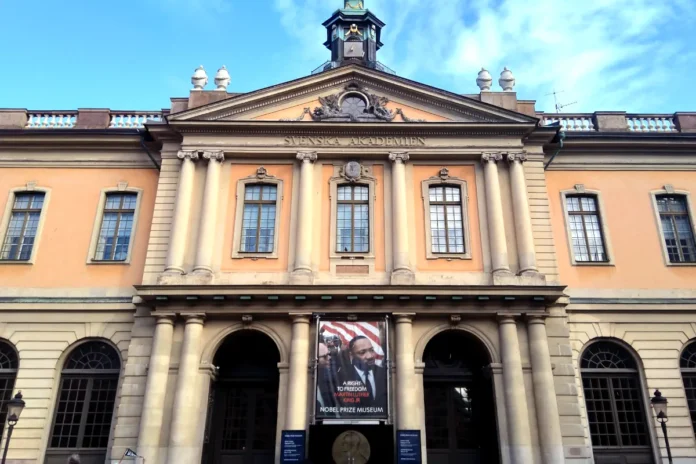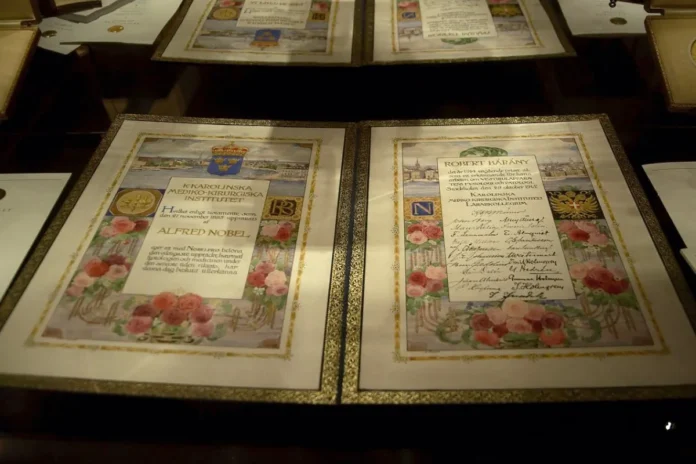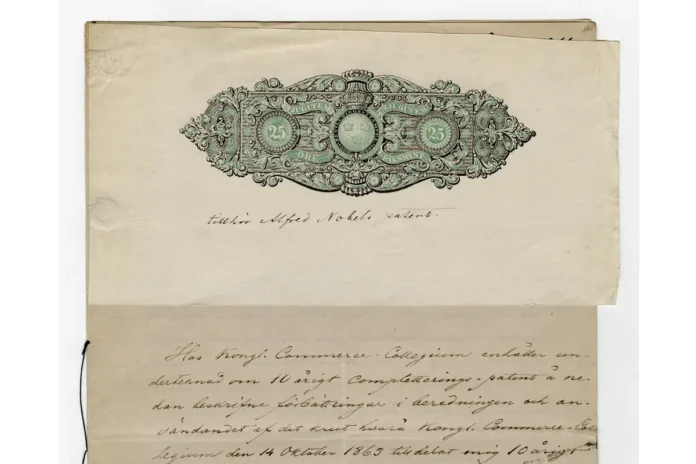The Nobel Prize: Celebrating achievement and legacy
Discover the Nobel Prize Museum (Nobelprismuseet), a unique destination in the heart of Stockholm, Sweden. Located in the historic Stockholm Stock Exchange building (Börshuset) in The Old Town (Gamla Stan), this museum celebrates the history, achievements, and legacy of the Nobel Prize and its esteemed laureates.
Discover the Nobel Prize Museum
At The Nobel Prize Museum, you immerse yourself in the rich history of the Nobel Prize, honoring remarkable individuals and groups since 1901. The museum features dedicated exhibits on Nobel laureates from all prize categories—Physics, Chemistry, Medicine, Literature, Peace, and Economic Sciences. Each exhibit showcases their significant contributions to humanity.
Engaging exhibits and activities
The museum brings the Nobel Prize to life through:
- Interactive Exhibits: Dive into hands-on displays that explain groundbreaking scientific discoveries and literary masterpieces.
- Films and Multimedia: Watch documentaries and multimedia presentations that tell the stories of Nobel laureates.
- Guided Tours: Enjoy guided tours that provide in-depth insights into the fascinating world of the Nobel Prize.
- Temporary Exhibitions: Explore rotating exhibits that highlight various themes related to the Nobel Prize.
- Lectures and Seminars: Attend thought-provoking lectures and seminars featuring experts and laureates.
- Workshops: Participate in educational workshops designed for all ages.
Moreover, don’t forget to visit the museum’s gift shop, where you can find unique Nobel Prize-related souvenirs and literature to commemorate your visit.
Who was Alfred Nobel?
Alfred Nobel (1833-1896) was a Swedish chemist, engineer, inventor, and entrepreneur. Known for inventing dynamite, Nobel held over 350 patents, including those for synthetic rubber and artificial silk.
Alfred Nobel established the Nobel Prize in 1895, largely due to the surprising reaction to his own obituary. In a premature obituary in 1888, a French newspaper mistakenly declared him dead and referred to him as the “merchant of death” due to his invention of dynamite. Nobel was deeply troubled by this description of him as someone who profited from destruction.
In response, Nobel sought to leave a positive legacy. In his will, he allocated much of his fortune to fund a series of prizes to recognize achievements in fields that he believed contributed to the betterment of humanity. The Nobel Prizes were to be awarded for work in physics, chemistry, medicine, literature, and peace. A prize in economics was later added in 1968 by the Swedish central bank.
Nobel’s desire was to be remembered for something that contributed to the progress of knowledge and peace. He wanted this legacy rather than being known for the destruction caused by his inventions. Thus, the establishment of the Nobel Prize was his way of ensuring that his legacy would be tied to the advancement of science, culture, and global goodwill.
People celebrate Nobel’s legacy through his numerous inventions and his commitment to philanthropy and global peace. In essence, this recognition makes the Nobel Prizes among the most prestigious awards worldwide.Nobel’s legacy is celebrated through his numerous inventions and his commitment to philanthropy and global peace. In essence, this makes the Nobel Prizes among the most prestigious awards worldwide.
The Nobel Prize Museum building: A historic landmark
Constructed between 1773 and 1778, the museum building—originally designed by architect Erik Palmstedt—served as Sweden’s stock exchange (Börshuset). Furthermore, during World War II, it also served as a military communications center. The Börshuset building features Neoclassical design. Admire the symmetrical facades, grand columns, and intricate details that reflect Enlightenment ideals.
Currently, the building not only houses The Nobel Prize Museum but also the Swedish Academy and the Nobel Library, making it a hub for education and research across various fields.
Plan your visit
A trip to The Nobel Prize Museum provides a profound look into the laureates’ incredible achievements. It also emphasizes the Nobel Prize’s enduring influence. It’s an essential cultural institution for anyone interested in science, literature, peace, and the legacy of Alfred Nobel. Visit The Nobel Prize Museum and be inspired by the stories of those who have significantly contributed to advancing humanity.
Other attractions near The Nobel Prize Museum
- The Royal Palace (Kungliga Slottet): One of the largest palaces in Europe, this stunning residence of the Swedish monarchy offers guided tours, the Royal Apartments, and the Treasury.
- Stortorget Square: The oldest public square in Stockholm, known for its colorful buildings and historic significance. It’s a picturesque spot perfect for a leisurely stroll.
- Storkyrkan (Stockholm Cathedral): The oldest church in Gamla Stan dates back to the 13th century. It houses impressive interior artworks, including the famous statue of St. George and the Dragon.
- The Swedish Parliament (Riksdagshuset): This impressive building, located on the island of Helgeandsholmen, serves as the seat of Sweden’s national legislature.
- The House of Nobility (Riddarhuset): This beautiful structure serves as the assembly house for the Swedish nobility and is known for its impressive architecture and rich history.
- Riddarholmen Church (Riddarholmskyrkan): This church, one of Stockholm’s oldest buildings, serves as the burial site for Swedish monarchs and features stunning medieval architecture.
- Mårten Trotzigs Gränd: The steep, narrow staircase and unique charm make the narrowest street in Stockholm famous.
- Järnpojke (Iron Boy): This tiny statue, also known as the “Little Boy Looking at the Moon,” holds the title of Stockholm’s smallest public monument. This charming piece serves as a lesser-known attraction.
In essence, these attractions offer a well-rounded experience of Stockholm’s rich history, culture, and architectural beauty, all within close proximity to The Nobel Prize Museum.










